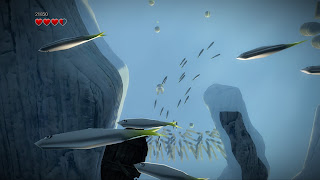Today was no different, but this time I thought it could be interesting (to me, at least) to write down the thought process. If nothing else, it shows a concrete example and a brief insight in how this particular Game Designer works and what is actually the core of what I work with...
Basically, I am working on a gangster deck builder / worker placement tabletop game, trying to weed out some complexity issues. In order to do so, I tried to alter the base system of the game, without ruining the already working game flow.
These were the considerations that went through my head:
You may play any number of location-specific cards as long as you have thugs (meeples) in that location (space on the table), majority or not. If you have majority (more meeples present than all other players, individually) when playing a location-specific card, you get the bonus printed on the card under Majority… but that means that cards must have twice as many benefits written on them, which may seem overwhelming to new player. This is the original setup for the game, by the way, tried and tested for more than a year, now.
So, a different approach would have almost the same as above, but this time I don’t present all the cards available for purchase right away, Dominion style. Instead, go Star Realms style and randomly display a few cards of each type for players to buy from… but that means that players cannot rely on longer-term planning as they have no idea what will come up in any of the deck types.
Or, what if you may play one location-specific card for each thug you have in that location… But what if you move Thugs out of the location, or they are arrested, as a result of your card play – when does it affect the number of cards you can play, and how do you keep track? Also, why would I bother focusing my attention on one location when it is so much more easy to different areas with your Thugs present?
Another approach could be that you may play location-specific cards as long as you have the required number of Thugs at that location. If you don’t have enough, you can always use the unfulfilled card to get more Thugs into play… but make sure that the cards don’t clutter up. Also, why are we fighting for majority? Is it location bonuses again?
Or, you may play any number of location-specific cards as long as you have thugs in that location, majority or not… But then the location bonuses must be more attractive, in order to incentivize players to compete for majority, which again means that cards that focus on Thug placement/attacks becomes stronger, as well as the play card to insert Thug feature.
Hmmm, or how about: You may play any number of location-specific cards as long as you have thugs in that location, majority or not. If you have majority when playing a location-specific card, you get the bonus printed on the location – one time per card… but that means that the value of the written benefits on the location-specific cards are diminished. In such case, the card benefits must be way better than the location benefits.
Or, how about the same as the original, but this time simplify the majority bonuses (eg. +1 $ or +1 Booze) written on each card, to not overwhelm players. This might actually work as intented, as long as the majority bonuses are varied.
My bike trip was coming to an end and another idea solution into my head:
To play a
location-specific (colored) card for its benefits, you must have the majority,
or shared majority, of Thugs on the matching location.
Once per
turn, if you have the majority (NOT shared with any other player) of Thugs in
any location(s), you may take the bonus indicated on that location.
To place a Thug, play any card from your hand, ignoring its content (text, color and symbols). Each card lets you place one Thug, anywhere, as long as you have it available (and not in prison).
This last one is more confrontational, as you get nothing if you don't at least share majority in a location. I think I will try that one on my next playtest session.
I know, I know, the various solutions presented above are not that different and could all work, with their individual minor flaws... but you want to get the right feel into the game and have it be as enjoyable as possible - whatever the parameters to tweak those are :-)



















